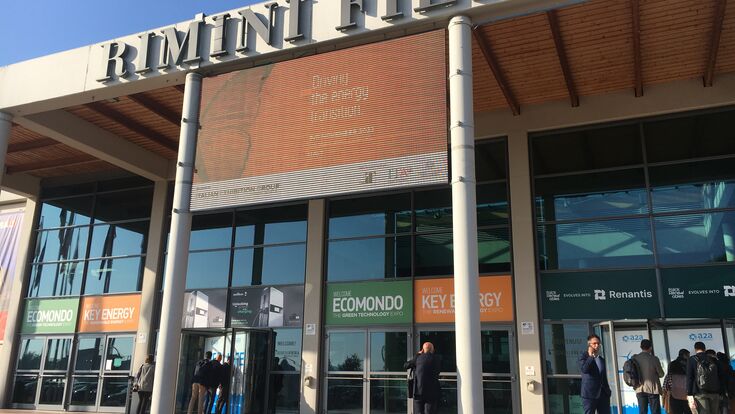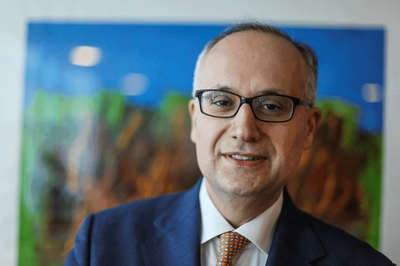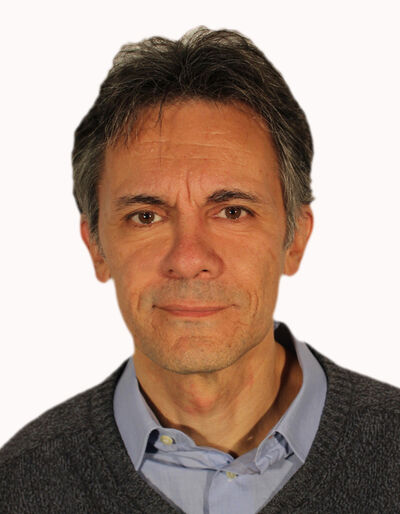Ecomondo : How to put value in waste

One session at this year’s Ecomondo in Rimini is on waste as a resource. Yet very often, waste is not seen as such. What is necessary to achieve this change of perspective?
There are various obstacles to this change of perspective, including cultural, technological, economic, and regulatory ones. First of all, we need to be convinced that the "take - use – dispose” model is not sustainable, partly because, sooner or later, there will be a shortage of space for landfills, and partly because the continuous extraction of raw materials leads to a depletion of resources and could bring many production processes to a halt. The use of waste streams as secondary raw material can contribute to preventing such a problem and efficiently dispose of the generated stream. However, it is not always easy to assign value to residue or waste. Further, we are still missing techniques/processes that efficiently enable some waste to be recycled or converted into valuable products some ongoing applied research and technology transfer is mitigating such needs. Of course, significant investments in plants are also required: this must also, at least initially, be incentivised by public institutions so that a virtuous circuit can be set in motion, which can then be self-sustaining later, even in a context of private competition. Lastly, legislation should facilitate the implementation of innovative technical solutions as much as possible, quickly recognising, for example, the “end-of-waste” status of materials that are recovered at certain quality levels.
Like our content? Subscribe to our newsletters!
E-waste is the fastest-growing waste stream worldwide. Can the waste management industry keep up with dealing with this waste?
In many cases, e-waste is a highly valuable urban mine. In some cases, the concentration of precious elements can exceed that found in traditional mines. However, the quantitative recovery of all precious elements and materials of e-waste is often a challenge given the heterogeneity and complexity of the materials as requested for ensuring the multifunctionality required for today's ICT devices. Here, the design of the product to be manufactured considering the end-of-life dismantling, will facilitate recycling, reuse, or the recovery of precious components. In short, it is probably the sector that requires the most initial investment, but which can achieve the greatest added value from effective material recovery

E-waste is probably the sector that requires the most initial investment, but which can achieve the greatest added value from effective material recovery.
Textile waste is also a big part of municipal waste. Would EPR schemes help to decrease this fraction and boost textile recycling?
EPR schemes can certainly help increase the recycling of these materials, which is currently still very low. In this area, a cultural change can also be important to overcome the “fast-fashion” logic. The high heterogeneity of materials and products is an extremely important obstacle to recycling. Wool, cotton, linen, and silk, as well as the numerous series of synthetic fibres, require individual separation and valorisation, if one does not simply want to propose “down-cycling” solutions. But the separate collection, even at the European level, is still in its infancy and we do not have yet industrial treatment in place. A lot of work will have to be done on this in the coming years.
More on the topic: The world's first automatic large-scale textile sorting plant is in Sweden
The EU is developing a design-for-recycling work plan, as many from the waste management industry demand. What products and materials are especially in need of such a strategy and how would that impact the waste management sector?
As mentioned earlier, “design” is an essential step towards reducing the quantity and hazard of waste to be disposed of and improving the recycling/exploitation of the lower waste produced. This is particularly true for consumer goods made up of highly heterogeneous materials, such as WEEE, but also cars or their components. More standardisation in production, by homogenising the characteristics of different products from different companies, could certainly facilitate the dismantling and recovery phase.
Many countries – Italy included – have national plastics strategies. What are they doing right – and where could they improve?
With regard to plastics, it is necessary to make sure that all plastic products introduced onto the market can be recycled and that the percentages of actually recycled plastics are increasing. Italy has an important tradition both in the primary polymer production industry and in the collection and recycling of plastic waste, which is growing year after year, although further efforts must be made to achieve the 2030 targets. In addition, the production and use of compostable biopolymers and bioplastics, which are viable alternatives to single-use plastics, are increasing, particularly in some industrial sectors.

Biogas can make a substantial contribution to achieving Europe's future energy independence and “carbon neutrality” because it is renewable, self-produced, carbon-neutral energy.
A recent report showed that various countries are not on track to meet the EU 2035 targets. What can be done to change that?
The situation is very different among the various European countries, some of which have already reached the targets set for 2035, while others still use landfills to a large extent. On the one hand, it is necessary to work on incentives, including the dissemination of good practices, which, as it was mentioned above, often become economically more convenient than mere disposal operations. On the other hand, action should also be taken on sanctions to urge those countries lagging furthest behind to achieve the targets and take more decisive steps towards implementing a circular economy.
Biogas and biomethane are viable options for natural gas, yet only a small percentage of the gas used in Europe is biogas. What is necessary to increase this rate?
Likely, the success of systems to convert biowaste into biogas (and biomethane) can also be boosted by streamlining authorisation processes and incentives to use these fuels instead of fossil fuels. Biogas can make a substantial contribution to achieving Europe's future energy independence and “carbon neutrality” because it is renewable, self-produced, carbon-neutral energy. At this precise time of international political instability and tensions, to which problems in the supply of primary energy sources are also inevitably linked, it is necessary to further boost the sector, and invest in the construction of Biogas plants, which, together with composting facilities, can allow us to efficiently dispose of wide mass and types of organic waste generated in urban and agro-industrial areas and by wastewater treatment plants with the production of precious biofuels, fertilizers, and clean water.
More on the topic: Biomethane: On the road away from fossil fuels

